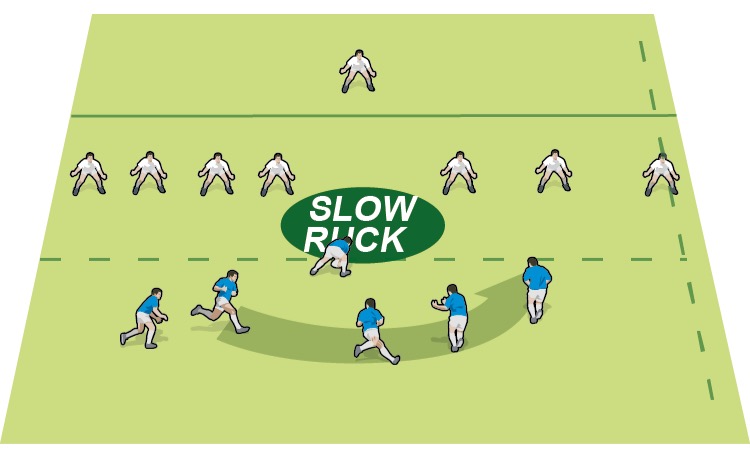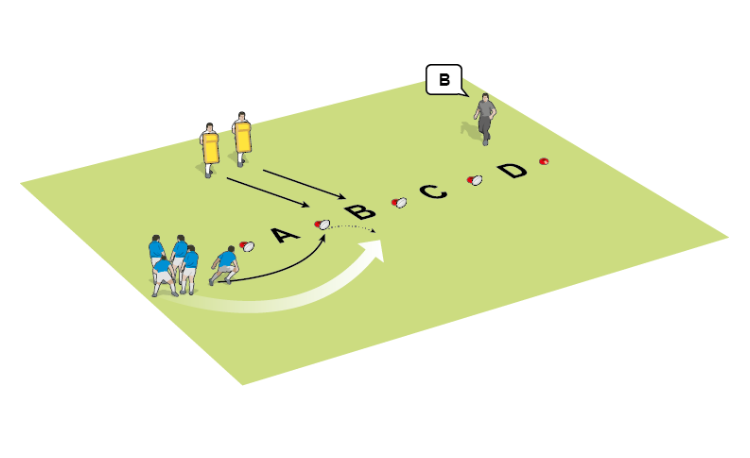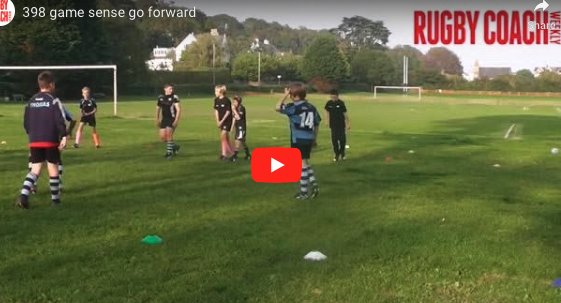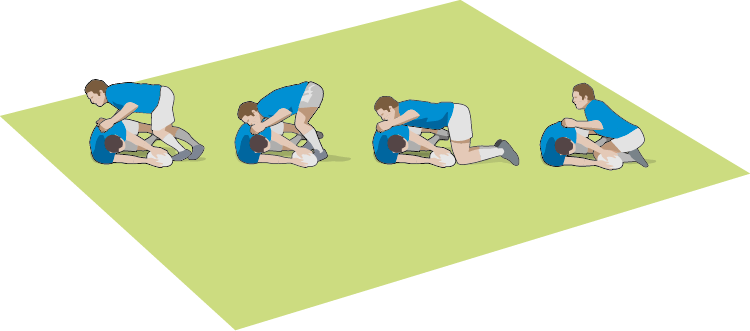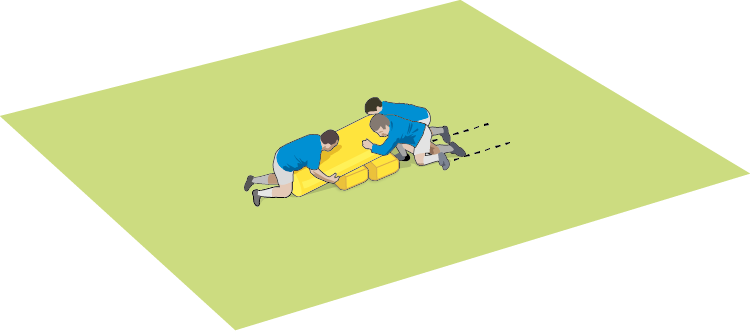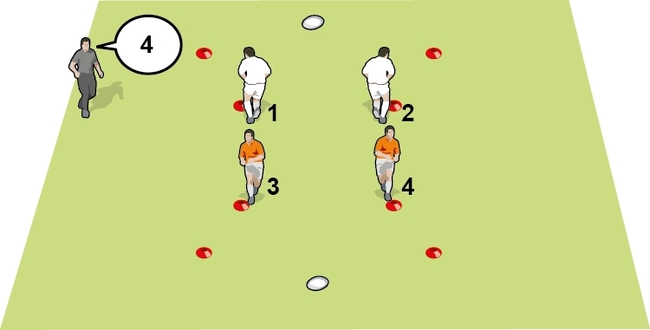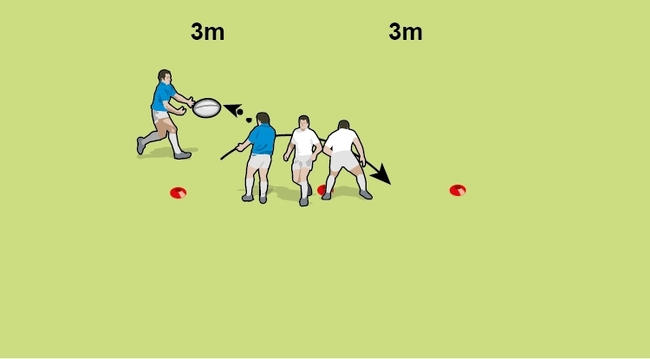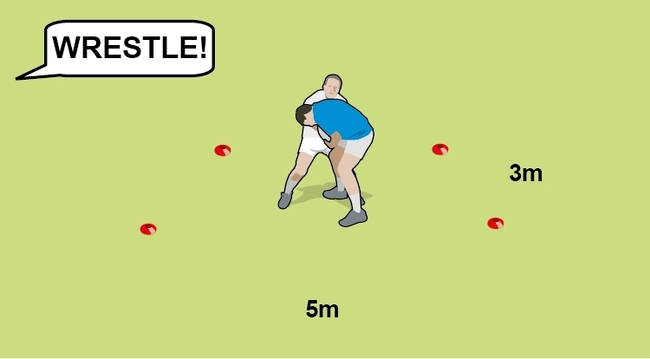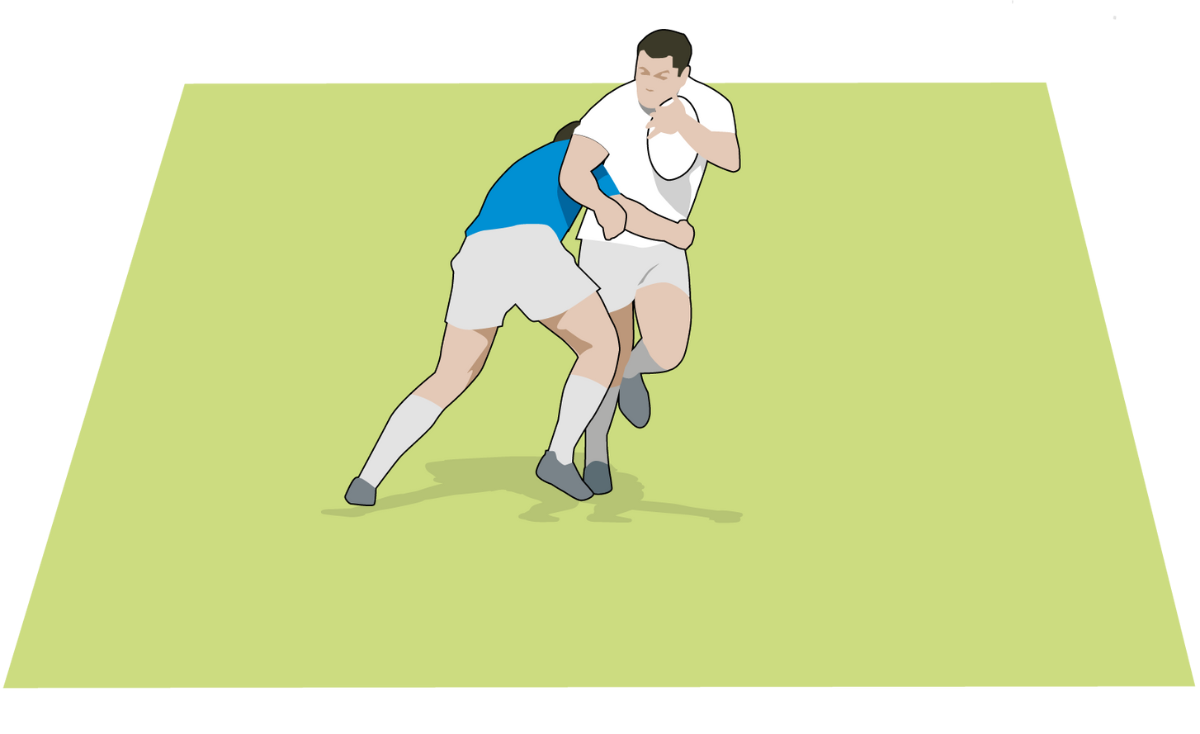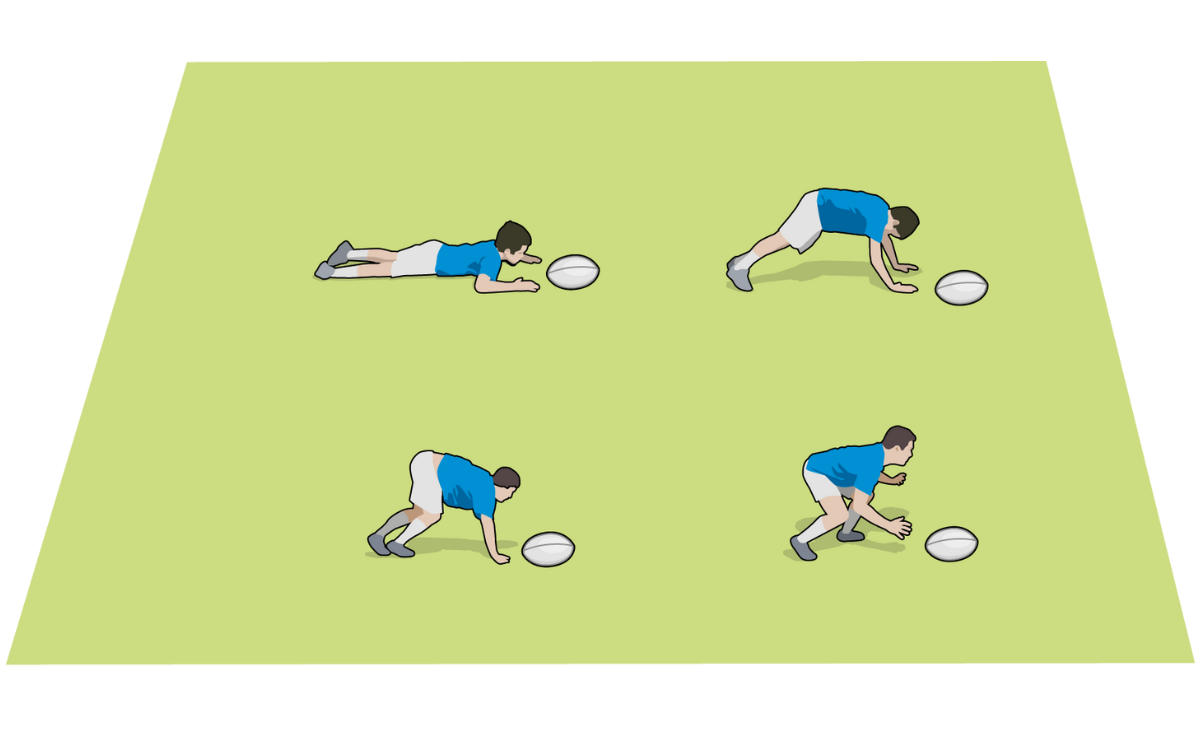Learn how to play at pace from the ruck
Use a quick recycling game to stress defences, win the breakdown with three players and attack with width. By ex-England Women’s coach GRAHAM SMITH.
During the 2015 World Cup, when he was head coach of Japan, Eddie Jones used the phrase “ruck and run”.
The thought behind it was that the traditionally smaller Japanese team did not want to engage larger, stronger and more powerful players.
The first step was to get the ball carrier to be proactive and get the ball back quickly.
Step two was to win the breakdown with as few players as possible and move the ball away.
This style of play is suitable for all teams and is something we developed with the England Women’s team as well.
Blast first, anchor second
The default action for arriving players at the ruck should be to blast the threats away.
If you are on your own facing multiple threats, then ’anchor’ until support arrives. An anchor is a low, strong body position over the ball, clearly supporting the bodyweight.
The anchoring player will need to be strong and low to manage the impacts. The player keeps their knees and feet active.
If they are then rolled away (sometimes called the crocodile roll), this will prevent their feet getting stuck and avoid the risk of possible injury.
Key points:
Legal position
- Back parallel to the ground
- Supporting own bodyweight
- Space for a contest
Keep the knees and feet active (knees bent and on the balls of the feet) to prevent injury if the player is rolled away.
Related Files

Clearing the low threat
Use this exercise to develop a strong impact and low driving body height.
Place two ruck pads on the ground and then place a tackle tube on top. This gives a very low clear-out height to focus on.
Add a player as a jockey for extra weight. Make sure they keep their head low and away from the edge of the pad.
Put two players on the ground. They need to be far enough apart that they can roll in and then get up to hit the breakdown, clearing the “threat”.
WHAT TO LOOK FOR
- Speed of action, so they don’t wait for team-mate get up and hit.
- The player who is slightly slower getting up links onto a team-mate, helps generate more impact and works to stay connected.
- Make sure there is knee lift and leg drive through the collision.
- Players must be very aggressive to win the head-height battle.
- Check there is body management and control. The players should stay square at the impact. If they lose shape, they have to reshape to avoid folding in or twisting away.
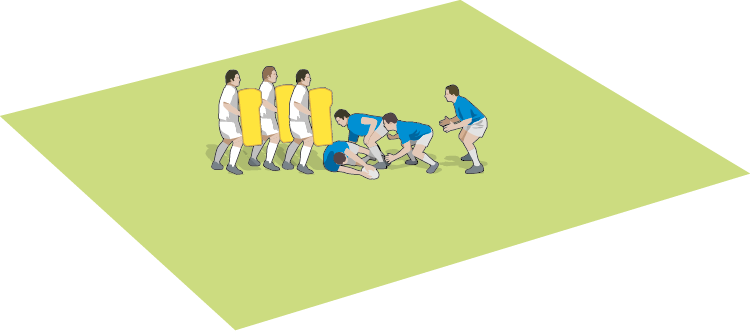
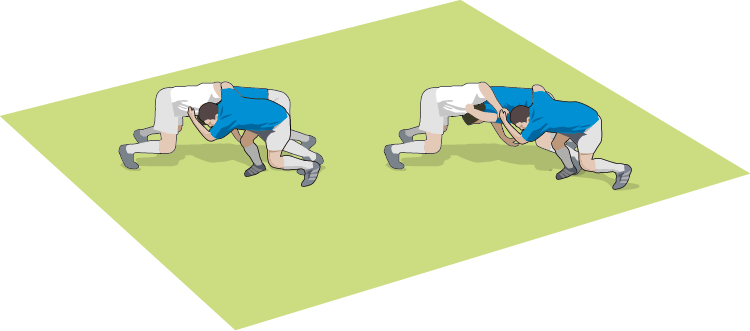
Impact work-rate activity
Working against two to three ruck-pad holders, a succession of players clear out over a body on the ground with the aim of producing clean ball.
Sometimes a player will have to “anchor” if their support isn’t there in time.
Set up a player as an anchor over the ball and a player on the ground. The next player drives in, linking on the anchored player, and drives them forward to clear the threat. The next player then repeats.
Once the first player is out of play, they must get back to come through the tackle gate, making sure a pad can’t get to the ball on the ground.
WHAT TO LOOK FOR
- A high work rate and impact to clear the threat.
- Link at shoulder and hips when connecting with team-mates to create stability.
- Avoid hitting the hips or buttocks of the player in front, since this will create disruption and instability.
- Talk from back to front to say what’s on: Anchor or blast.
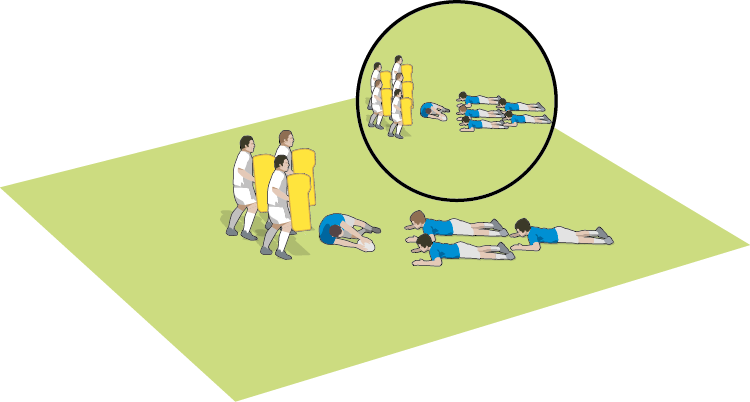
Wedge ruck activity
This activity is similar to the impact work-rate activity but involves more players, with a minimum of three and a maximum of six.
Put one player on the ground with a ball. Just behind them, put three defenders with ruck pads who will aim to get over and low to try and cover them.
Put the attackers on the ground, split into a wedge shape (see image, above). On your command, the attackers get up and blast the threat, aiming to clear the ball and body on the ground with the support coming in from behind to add drive and impact.
As soon as they have cleared the ball, they must work to get back through the tackle gate and protect the body and ball on the ground.
WHAT TO LOOK FOR
- Win the collision with low to high impact, keeping the knee lift and leg drive going.
- Get connected and stay connected.
- Be aggressive.
- Stay square. When the player loses shape, they then reshape.
Newsletter Sign Up
Coaches Testimonials

Gerald Kearney, Downtown Las Vegas Soccer Club

Paul Butler, Florida, USA

Rick Shields, Springboro, USA

Tony Green, Pierrefonds Titans, Quebec, Canada
Subscribe Today
Be a more effective, more successful rugby coach
In a recent survey 89% of subscribers said Rugby Coach Weekly makes them more confident, 91% said Rugby Coach Weekly makes them a more effective coach and 93% said Rugby Coach Weekly makes them more inspired.
Get Weekly Inspiration
All the latest techniques and approaches
Rugby Coach Weekly offers proven and easy to use rugby drills, coaching sessions, practice plans, small-sided games, warm-ups, training tips and advice.
We've been at the cutting edge of rugby coaching since we launched in 2005, creating resources for the grassroots youth coach, following best practice from around the world and insights from the professional game.
